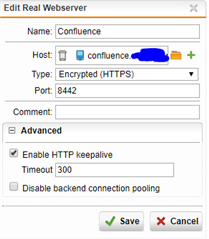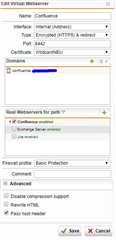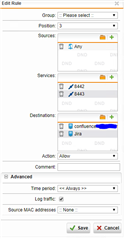Hi,
I have the following Setup at my HomeServer Environment:
- Sophos UTM 9.5 as a VM
- Two VMs with each 1 Webserver hosting a website
- A Third Party Wildcard certificate thats currently securing both sites
- Exchange Server Running on Port 443 as well with DNAT
Right now, WAF is not working for me. Im using DNAT at the moment.
Server1 with Port 8442 and Sever2 with Port 8443. That works great - but I would like to Access them both on the same Port 443.
The Servers are using the Tomcat Webserver, and are each configured to listen on Port 8442 / 8443 - im not really a geek on that one. Just if its important...
I tried to get WAF working over the current Ports by deactivating the DNAT rule and manually created the Firewall rule to allow traffic on Ports 8442 / 8443.
Sadly no connection. Attached are the configurations I did on my sophos.
Any help is appreciated! :)
This thread was automatically locked due to age.





